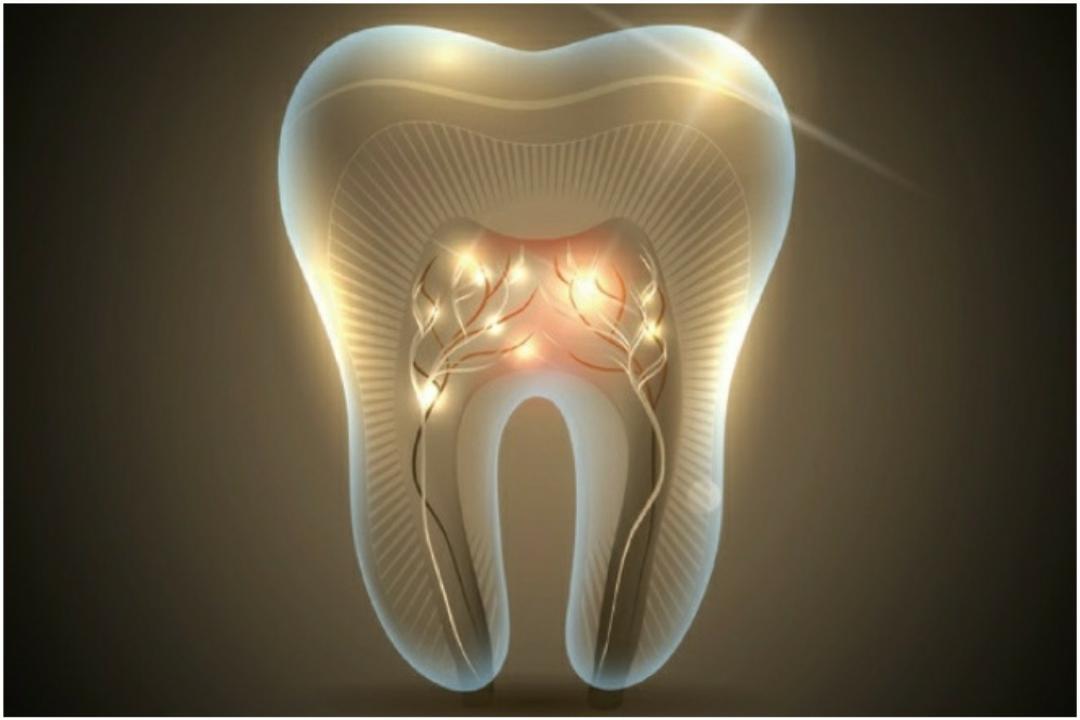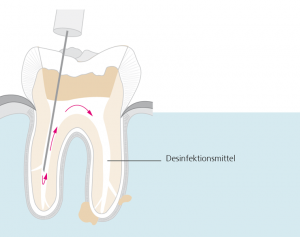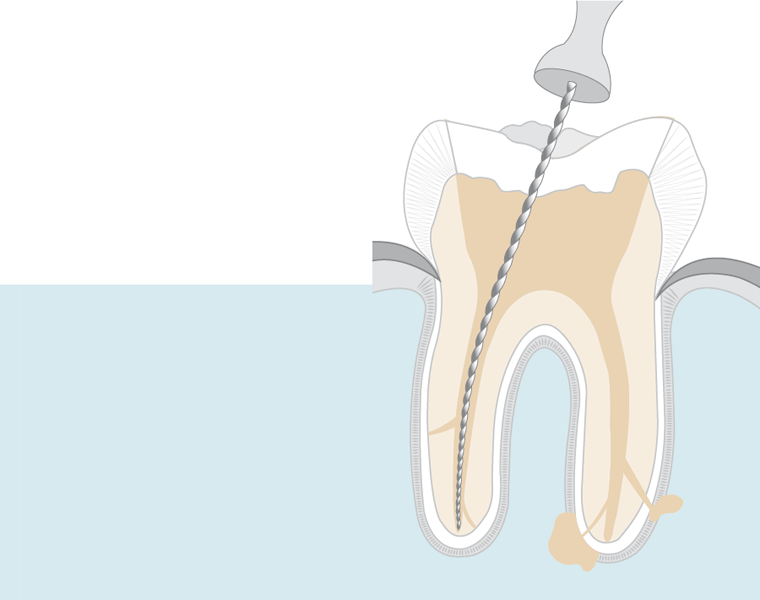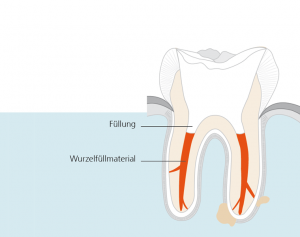Endodontics
Microscopic Root Canal – good cards for bad teeth

Types of microscopic endodontic treatment
- Treatment of acute, chronic and recurring inflammation
- Removal of broken root canal instruments and root canal posts
- Repair of defects on the tooth root (perforations/resorptions)
- Aftercare following dental accidents
- Measures to preserve the nerve tissue or its regeneration
- Revision treatments (root canal treatment of teeth that have already been treated unsuccessfully)
Why a root canal specialist?
The success of root canal treatment increases with the ability to remove the inflammation-causing bacteria from the tiny, inaccessible cavities of the tooth. Special instruments such as surgical microscopes, highly flexible nickel-titanium instruments, endodontic ultrasonic irrigation and electrical length measurement, thermoplastic condensation for root filling and, of course, a great deal of routine are required to adequately address these anatomical difficulties.
If these conditions are met, success rates of 85% to over 90% can be achieved, and our root canal specialist, Dr Sebastian Zorn, is able to successfully perform even complex root canal treatments thanks to years of additional training and the experience of thousands of successful endodontic treatments.
The surgical microscope in root canal treatment
With this sentence, the founder of microscope-assisted endodontics, Prof Syngcuk Kim, explained the problem with every root canal treatment.
Perfectly illuminated and maximally enlarged access to the root canal systems of a tooth is the key to the success of endodontic treatment. Only in this way is the dentist able to detect and successfully treat any excess root canals. Furthermore, only with the help of a dental microscope can foreign bodies be reliably removed from deeper areas of the tooth roots or microcracks in the tooth substance be recognised, which have a negative impact on the chances of success.
Um ein optimales Behandlungsergebnis zu erzielen, führen wir Wurzelbehandlungen ausschließlich mit einem hochwertigen Dentalmikroskop von Zeiss durch.
The race against bacteria
Symptoms
Root canal treatment procedure
TO 1

Source: dget.de
To remove the diseased or dead pulp, a small opening is drilled into the crown of the tooth and the nerve cavity (pulp chamber) is cleaned. The root canals are then widened using file-like instruments. This extension enables the entire root canal system to be cleaned and disinfected later.
TO 2

Source: dget.de
Optical magnification aids (magnifying glasses or dental microscope) are very important to achieve an optimal result and to recognise the fine and highly branched root canals. The root canal system with its main and side canals is cleaned, rinsed with a disinfectant liquid and shaped, if possible under visual control.
TO 3

Source: dget.de
After cleaning and disinfection, the cavity is filled with a plastic sealing material. As a final step, the access in the crown of the tooth is closed with a bacteria-proof and stable filling, which can be anchored with a root post. Prepared in this way, the tooth can be rebuilt or, as a rule, restored with a crown
Advantages of root canal treatment
Should a bridge over lost neighbouring teeth become necessary later on, the patient’s own tooth provides excellent support.
Costs
Therefore, such a complex and time-consuming treatment cannot be billed purely via the statutory health insurance funds. The costs incurred by the patient are based on the GOZ 2012 ( scale of fees for dentists 2012 ), depending on the individual work involved.
If you have taken out private supplementary insurance, this may be used to cover the additional fees incurred. For privately insured patients, the health insurance will cover the costs within the scope of the individual insurance contract.
Please remember: Even if the patient pays the full cost, microscopic root canal treatment that saves the patient’s own tooth is usually the most cost-effective treatment.
Conclusion
Every year that a root canal-treated tooth serves its purpose and does not have to be replaced by a dental prosthesis is a gain for your quality of life. Put your dental health in our hands with confidence.
We at Leipziger14-Ihre Zahnärzte are happy to advise you with our expertise and plan every single step with you. Our credo is…
Patient OPINIONS
Great doctor
Thorough diagnosis; honest recommendation not to carry out the planned special treatment in my case, thus saving me unnecessary treatment costs.
Friendly and competent
I felt safe and in good hands from the very first moment. Dr Planert took the time to answer my questions and explained everything clearly.
Outstanding!
I am completely satisfied! Very courteous reception... Advice and treatment at a very high level. Can recommend Leipziger14-Ihre Zahnärzte and Mr Planert with a clear conscience!"
Great doctor
Thorough diagnosis; honest recommendation not to carry out the planned special treatment in my case, thus saving me unnecessary treatment costs.
Outstanding!
I am completely satisfied! Very courteous reception... Advice and treatment at a very high level. Can recommend Leipziger14-Ihre Zahnärzte and Mr Planert with a clear conscience!"
Friendly and competent
I felt safe and in good hands from the very first moment. Dr Planert took the time to answer my questions and explained everything clearly.

